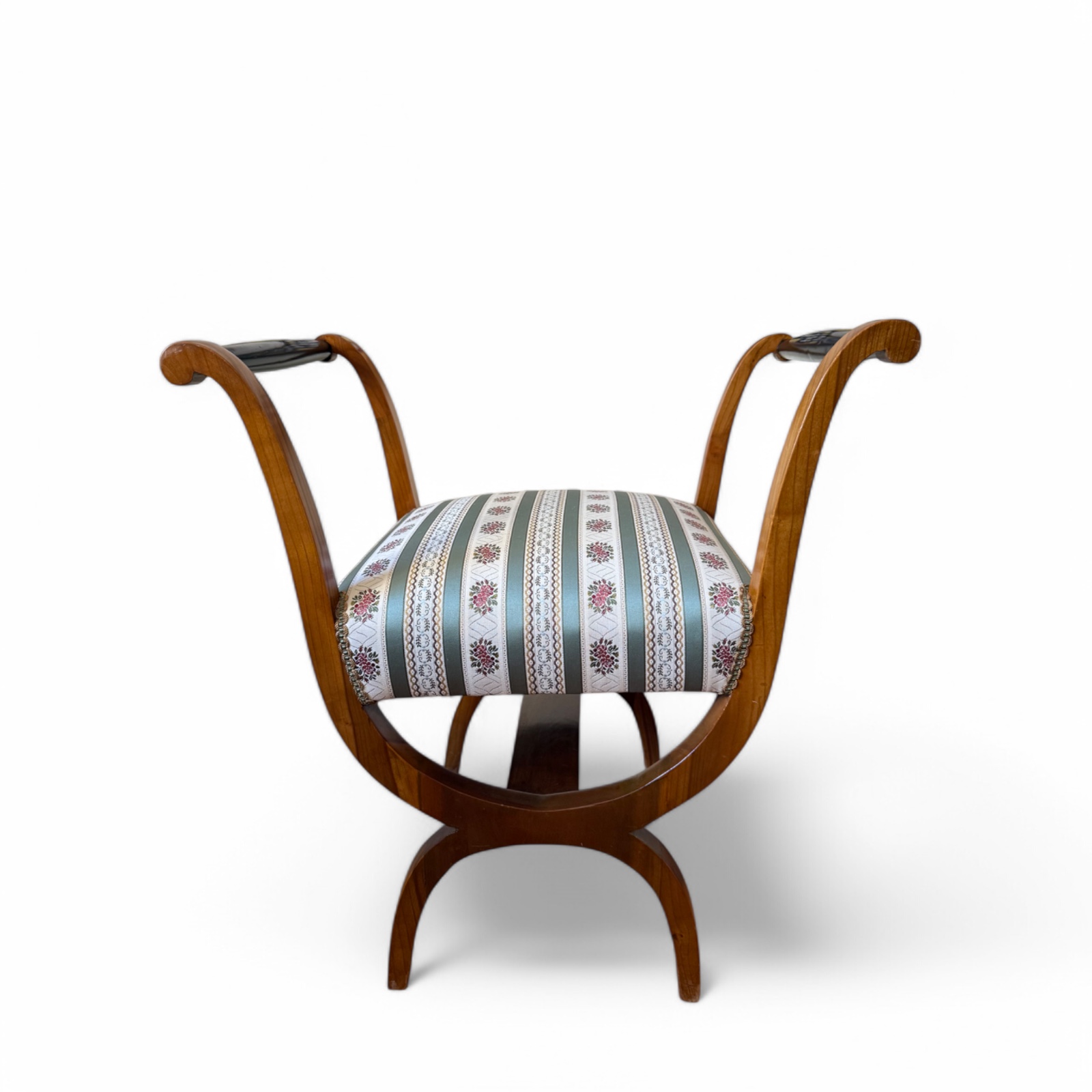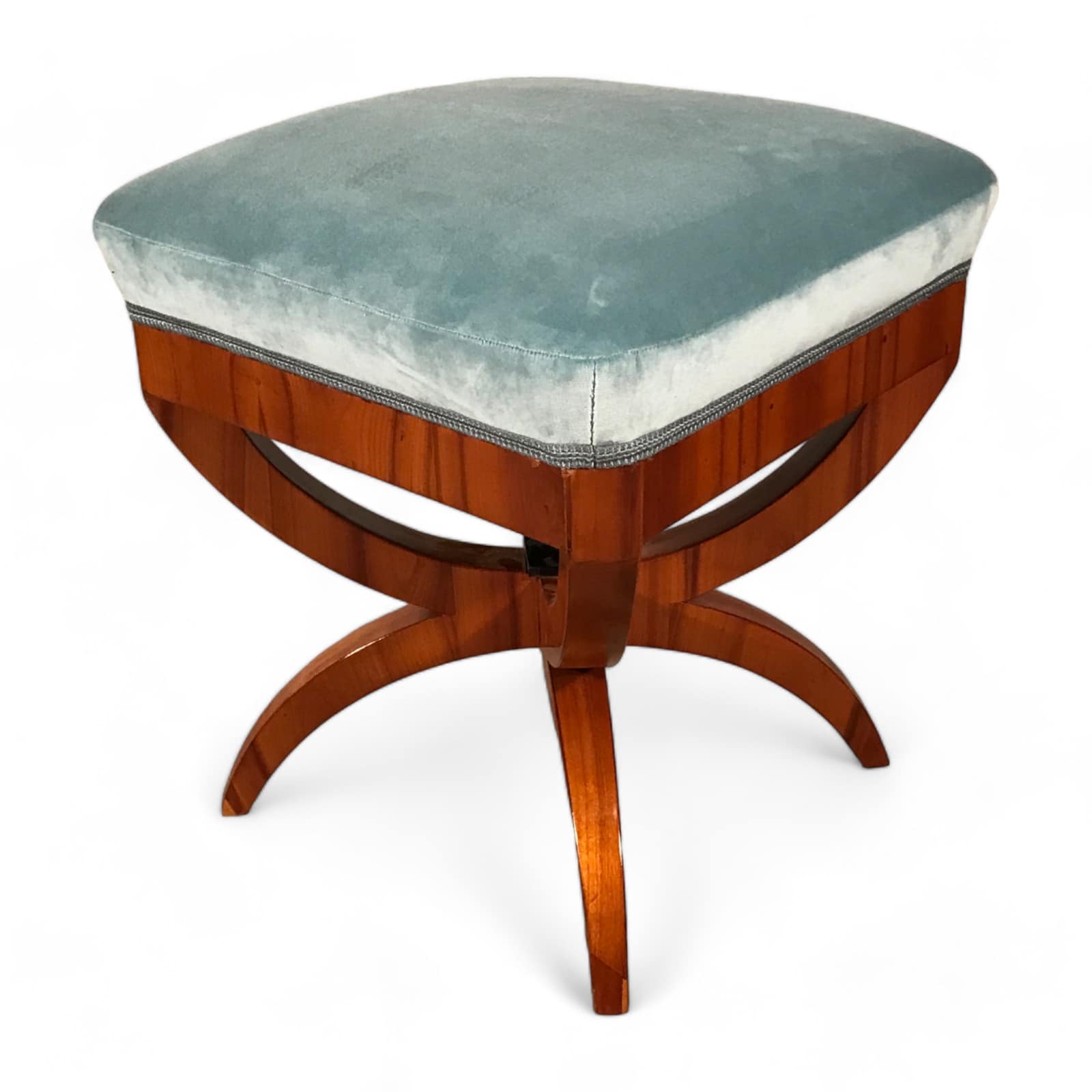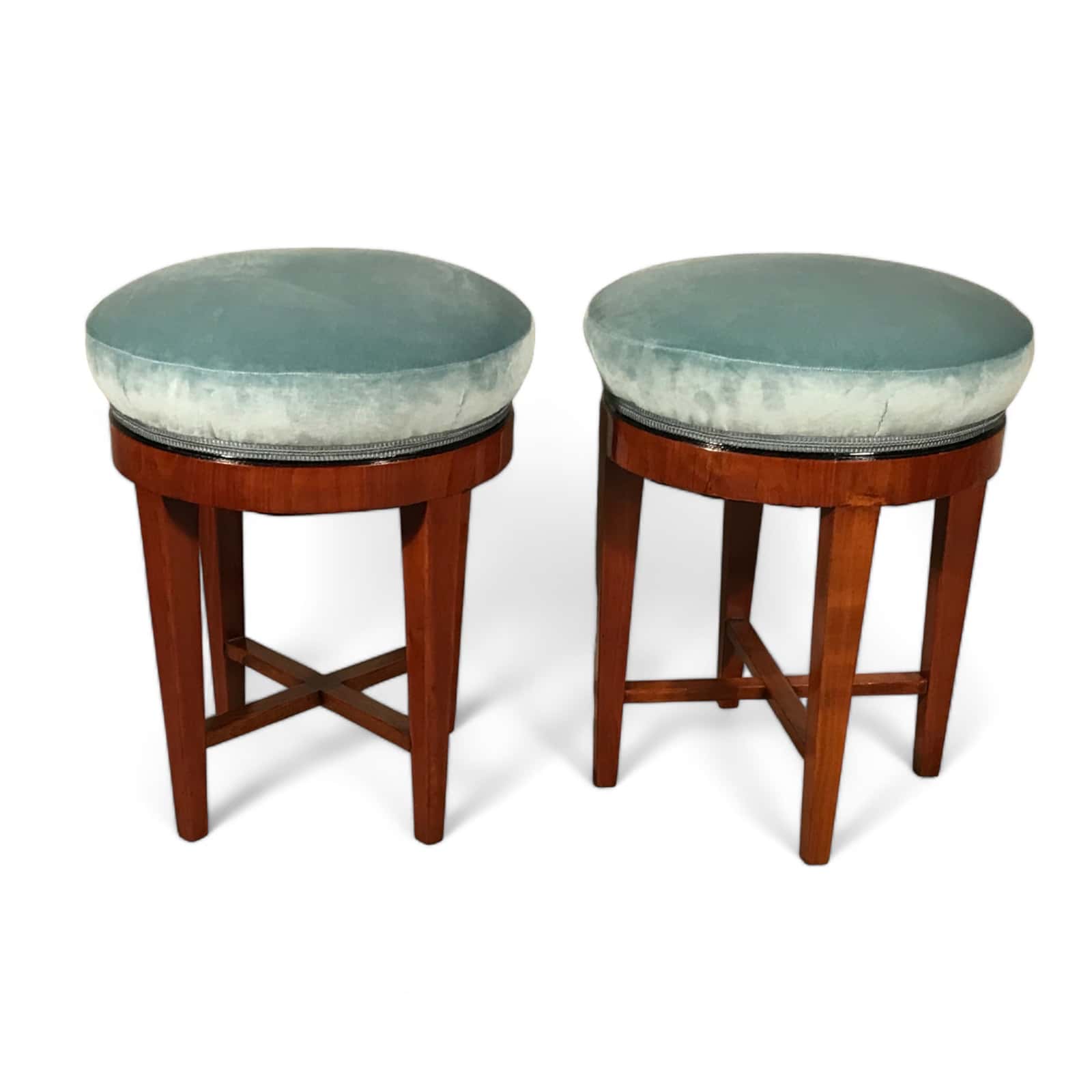
The Elegant Simplicity of Biedermeier Stools: History, Design, and Function
The Biedermeier period (1815–1848) marked a remarkable shift in European design aesthetics. Emerging in post-Napoleonic Europe—especially in German-speaking regions such as Austria and southern Germany—Biedermeier design reflected the tastes and aspirations of the growing middle class. While this period is renowned for its understated elegance and refined craftsmanship, one of its most versatile and charming pieces is often overlooked: the Biedermeier stool.
Historical Context: The Rise of Biedermeier Design
Following the end of the Napoleonic Wars, there was a cultural and economic shift in Europe. Without the lavish patronage of aristocracy and empire, furniture design turned inward, focusing on comfort, functionality, and an appreciation of natural beauty. Biedermeier furniture became more intimate, tailored for bourgeois homes instead of palaces.
This era coincided with the early stages of industrialization, but Biedermeier pieces remained largely handcrafted. The focus was on clean lines, symmetry, and high-quality local materials like cherry, walnut, and birch. Stools from this period exhibit the same ethos—balancing utility with beauty.
Design Characteristics of Biedermeier Stools
Biedermeier stools were designed with practicality and elegance in mind. Unlike earlier periods, which favored excessive ornamentation, Biedermeier stools are known for their clean profiles, tapered legs, and exquisite wood veneers. Common wood choices included cherry, walnut, and birch—often polished to a warm glow that highlighted their natural grain.
A standout example is the gondola-shaped stool, which features elegantly curved side supports that resemble the swoop of a gondola’s prow. These graceful silhouettes offered not only aesthetic appeal but structural integrity, allowing the stool to remain sturdy while maintaining a light visual footprint.


Other designs included rectangular stools with subtle inlays or ebonized accents. Upholstery was often updated over time to match changing interior styles, but traditionally, the seats would be covered in handwoven textiles or early 19th-century printed fabrics.


How Were Biedermeier Stools Used?
Despite their simple structure, Biedermeier stools were incredibly versatile in the home:
1. Bedroom Seating
Stools were often placed at the foot of the bed or beside a vanity. Their compact size made them ideal for dressing areas, offering seating without overwhelming the space.


2. Entryways and Hallways
Due to their light weight and smaller dimensions, Biedermeier stools were perfect for narrow hallways and entrance foyers. They provided an elegant way for guests to sit while removing shoes or waiting.
3. Living Rooms and Salons
In social spaces, stools offered supplementary seating during gatherings or musical evenings. They could also serve as small side tables when topped with a tray.
4. Accent Pieces
With their graceful shapes and quality craftsmanship, Biedermeier stools frequently served as decorative highlights. In modern interiors, they work beautifully as statement pieces that blend functionality with heritage.
A Closer Look at Dimensions
Most Biedermeier stools have compact proportions, allowing them to fit easily into a variety of rooms. For example:
- Width: Typically around 28.5 inches
- Depth: Approximately 20 inches
- Height: Ranging from 18 to 31 inches, depending on design
These proportions make them comfortable and usable without taking up much visual space.
Why Invest in a Biedermeier Stool Today?
Biedermeier stools offer an ideal entry point for collectors and interior designers looking to incorporate authentic historical pieces into contemporary homes. Their balance of form and function, combined with exceptional craftsmanship, makes them enduringly appealing.
They are especially sought after in:
- Minimalist or modern interiors seeking warmth and depth
- Eclectic spaces where history and personality matter
- Rooms needing subtle yet sophisticated accent furniture
Caring for Your Antique Stool
Maintaining a Biedermeier stool involves gentle care:
- Dust regularly with a soft cloth.
- Avoid harsh chemicals or polishes that could damage the finish.
- Reupholster with care, using period-appropriate or high-quality modern fabrics to enhance both comfort and authenticity.
Final Thoughts
From their historical roots to their elegant silhouettes, Biedermeier stools are more than just furniture—they are storytelling objects that bridge centuries of design evolution. Whether placed in a grand hallway or a quiet reading nook, these stools bring timeless character to any space.
At Styylish, we source original Biedermeier pieces from expert vendors in Europe. If you are looking for a one-of-a-kind stool or need help sourcing the perfect antique for your project, browse our collection of Biedermeier furniture or reach out to us directly. We’d love to help you find the perfect match.







